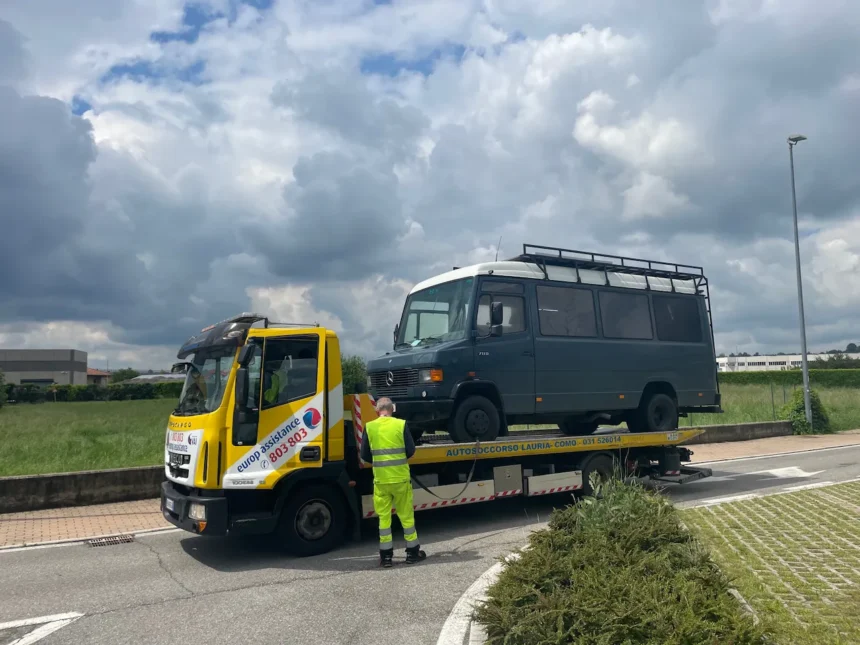You’ve been looking at that old van on your drive for months now. It’s been sitting there since it failed its MOT, gathering dust and taking up space. Maybe it’s an old Transit that served you well for years. Maybe it’s a family van that took you on countless holidays and house moves. Or maybe it’s a camper van that’s seen better days.
Whatever it is, you’re probably thinking it’s worthless. After all, it doesn’t run, it’s got rust, and it would cost more to fix than it’s worth. But here’s something that might surprise you: that old van is probably worth a lot more than you think. In fact, it could be worth several times more than a similar-aged car.
This guide is going to show you why vans are the hidden gems of the scrap world, and how you can turn your old van into a decent chunk of cash.
Size Matters: Why Vans Are Scrap Gold
The secret to a van’s scrap value is simple: size. Scrap value is largely based on weight, and vans are heavy. Much heavier than you might think.
A typical small car weighs around 1,000-1,200kg. A medium-sized family car might weigh 1,400-1,600kg. But a van? Even a small van like a Ford Transit Connect weighs around 1,500kg. A full-size Transit can weigh 2,500kg or more. And a large van like a Mercedes Sprinter can tip the scales at over 3,000kg.
What does this mean in cash terms? Well, if scrap metal is trading at £150 per tonne, your small car might be worth £150-£180. But that big van could be worth £375-£450. That’s a significant difference.
The Van Advantage: Built to Last
But it’s not just about weight. Vans have another advantage: they’re built differently from cars. They’re designed to carry heavy loads and to last for high mileage. This means they often have more robust components that are valuable to scrapyards.
Vans typically have:
- Stronger chassis and suspension components. These are made from heavier-gauge steel and are worth more as scrap.
- Larger engines. Van engines are often bigger and more robust than car engines, making them more valuable for parts or scrap.
- Commercial-grade parts. Things like alternators, starter motors, and gearboxes are often beefier in vans, making them more sought-after in the second-hand market.
Different Types of Vans, Different Values
Not all vans are created equal when it comes to scrap value. Here’s a rough guide to what different types of vans might be worth:
Small Vans (Transit Connect, Berlingo, etc.): These typically weigh 1,500-1,800kg and might be worth £200-£300 as scrap.
Medium Vans (Transit Custom, Vivaro, etc.): These usually weigh 1,800-2,200kg and could be worth £300-£400 as scrap.
Large Vans (Transit, Sprinter, Crafter, etc.): These can weigh 2,200-3,000kg and might be worth £400-£500 as scrap.
Extra Large Vans (Luton bodies, box vans, etc.): These can weigh 3,000kg+ and could be worth £500-£600 or more as scrap.
Remember, these are rough figures. The actual value will depend on the current price of scrap metal, the exact weight of your van, and what salvageable parts it has.
The Hidden Extras
Your van might be worth even more if it has certain features or components:
Catalytic Converters: Van catalytic converters are often larger than car ones and contain more precious metals. They can be worth £50-£200 on their own.
Alloy Wheels: If your van has alloy wheels, these can add significant value. Alloy wheels are recycled separately and are worth more than steel wheels.
Copper Wiring: Vans often have more extensive electrical systems than cars, which means more copper wiring. Copper is valuable, and this can add to the overall scrap value.
Diesel Engines: Diesel engines are generally heavier than petrol engines and contain more valuable metals. If your van has a diesel engine, it could be worth more as scrap.
The Collection Challenge
One thing to be aware of is that scrapping a van can be more complicated than scrapping a car, simply because of the size. Not all scrapyards have the equipment to collect large vans, especially if they’re not running.
When you’re getting quotes, make sure you mention:
- The exact size and weight of your van
- Whether it’s running or not
- Whether it’s accessible (can a recovery truck get to it?)
- Any modifications that might affect collection (high roof, long wheelbase, etc.)
Most reputable scrapyards will have the right equipment, but it’s worth checking to avoid any surprises on collection day.
Maximising Your Van’s Value
There are a few things you can do to maximise the scrap value of your van:
Remove Personal Items: This might seem obvious, but vans are often used for storage, and it’s easy to forget about items tucked away in corners or under seats.
Remove Valuable Accessories: If your van has expensive accessories like roof bars, toolboxes, or sat nav systems, remove these before scrapping. You can sell them separately or use them on your next vehicle.
Drain the Fuel: There’s no point giving away a tank full of diesel. If your van is running, use up the fuel first. If it’s not running, you might be able to siphon it out.
Get Multiple Quotes: Van scrap values can vary significantly between different scrapyards. It’s worth getting quotes from several different places.
The Process: Same but Different
The actual process of scrapping a van is the same as scrapping a car. You need to:
- Use a licensed Authorised Treatment Facility (ATF)
- Fill in the V5C correctly
- Get a Certificate of Destruction
- Notify the DVLA
The only difference is that you need to make sure the ATF can handle the size and weight of your van.
The Bottom Line
That old van on your drive isn’t the worthless heap you think it is. It’s a valuable resource that’s literally worth its weight in metal. And because vans are big and heavy, that weight adds up to real money.
So, don’t let that van sit there any longer. Get some quotes, arrange a collection, and turn that old workhorse into cash. You might be pleasantly surprised by how much it’s worth.









